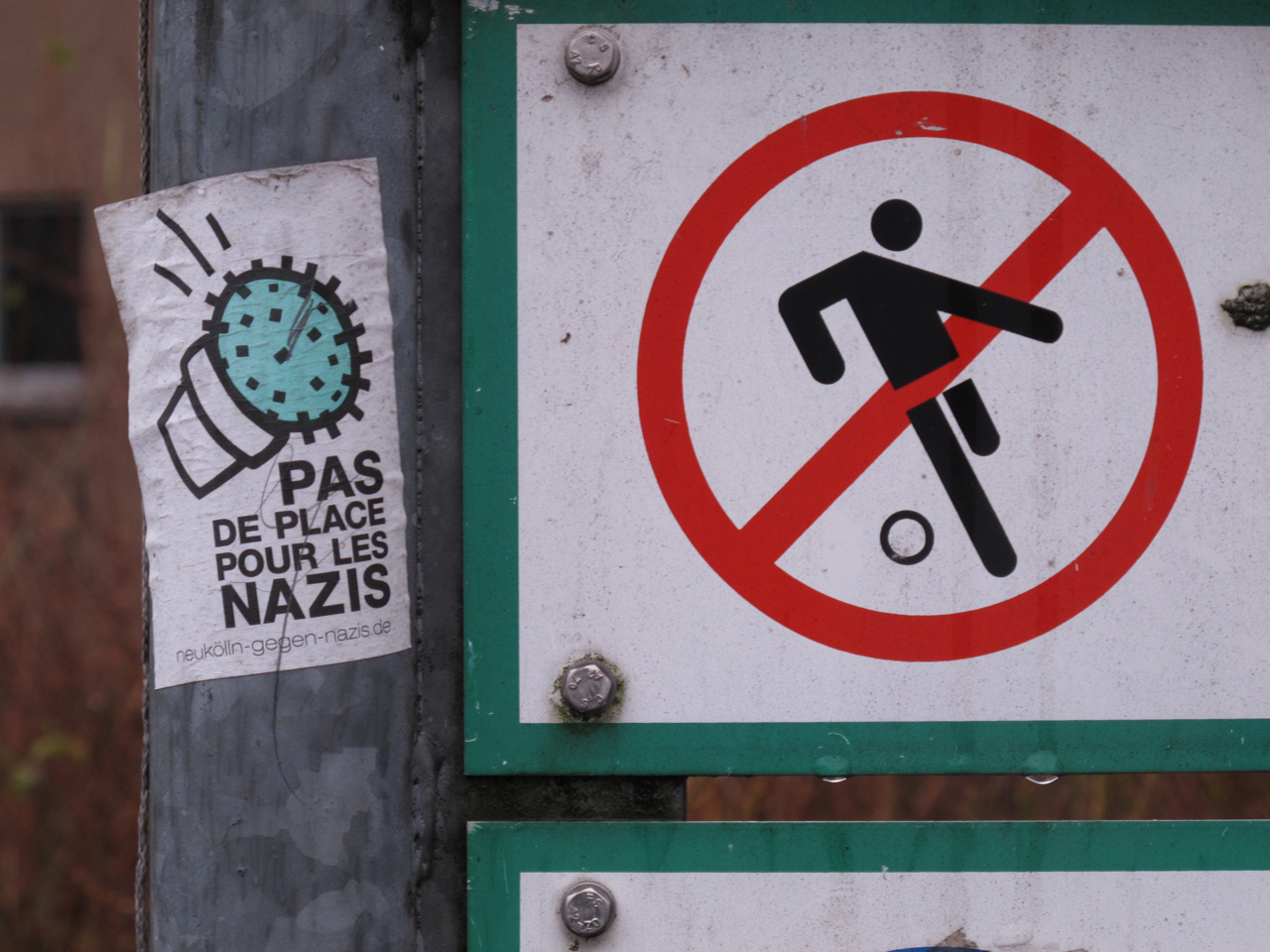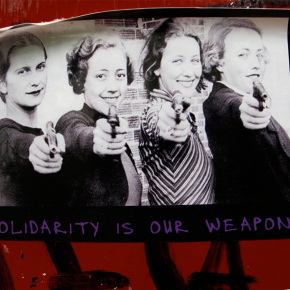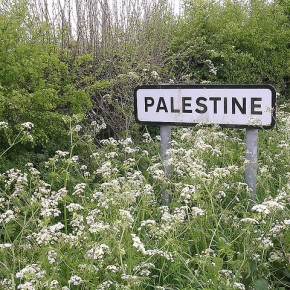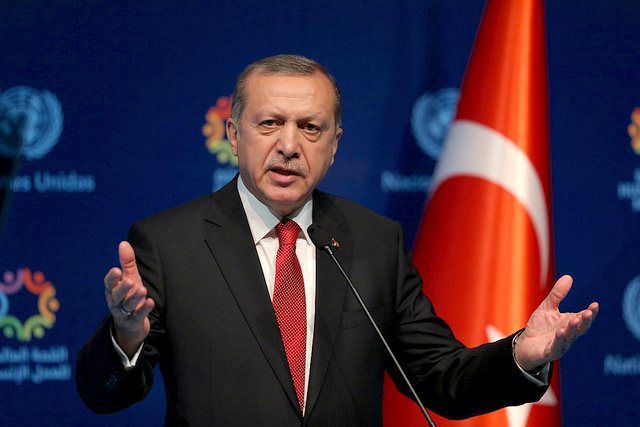“Racism is no longer a problem,” said the sociologist, as she put down her drink. “Amongst Germans, it’s no longer an issue. They accept difference now. Today, it’s the immigrants that are the problem, like the eastern Europeans, who are intolerant of Islam, and of women wearing burkas. A lot of work needs to be done with them.”
Introduced to me by an artist from the US, who was in Berlin at the time, I held my tongue. That very same morning, my wife and I had awoken to several, medium-sized Swastikas scrawled onto our doorway with sharpies. We assume they were meant for us, or any of the other Middle Easterners we knew who lived around Boxhagenerplatz.
Whether the responsible party knew what our background was or not, the incident was still unsettling. “I’m researching anti-Semitism against Muslims” I responded. “I find many parallels, in terms of the kinds of prejudices Muslim Middle Easterners are subject to, in Europe, to Jewish-focused anti-Semitism.” “Muslim anti-Semitism?” the scholar repeated, sounding surprised.
I started to feel like a fish out of water. The conversation quickly ground to a halt. Given the discrepancy in opinion, there was no point belaboring the subject. “Joel’s a musician,” said my American artist friend, trying to reignite the conversation. “He lives here now, and would be happy to give you a hand if you need help learning Logic or Pro Tools.”
I appreciated the change in topic. New to town, without many friends, I was eager to find common ground with someone who shared similar political interests. We’d pick up the subject again later, hopefully, on a different note. Still, I couldn’t help but feel a bit befuddled. “She said what?” I remember thinking. “What about the Swastikas this morning?”
Judging from Friedrichshain’s cosmopolitan character, one would be hard-pressed to disagree with the sociologist. From South Asian restaurants to doner parlors and sushi places, the neighborhood has an unmistakeably global air to it. Throw in some skate shops, squats, organic groceries, endless leftist flyers, and a cinema that shows Israeli movies (Ajami had just been featured) and you’d think that fascism was over and done with too.
“Sometimes, I feel like I’m in Berkeley, or Ann Arbor,” I remember telling my friend Vance, who came out to visit us from Seattle. “It’s so politically correct here. All the same creature comforts are available.” Walking through a former Nazi train depot along Revaler Strasse that had been transformed into a skate park and concert space, (among other things,) the parallels with America were obvious.
Obvious, that is to those who, like myself, and the people I know who have made the move from the US, can sense. There are enough parallels between Germany’s capital, the San Francisco Bay Area, and New York, to see why there is so much traffic between them. Especially for Americans looking for cheap places to live and work, as artists, and as writers. Berlin is an America we can still afford. At least for now.
Yet, there is an inescapable darkness to the German edition that clarifies the differences. “You’d never see that in the US,” said Vance, as he pointed out a mural of a wide-eyed Klaus Kinski painted on a dilapidated building. Unfamiliar with the activities of this former train depot, the scene put all kinds of discomfiting thoughts into my head about the Holocaust, and the transportation of prisoners to concentration camps. As it was intended to do, I guess. If not that, at least something approximate.
Like many foreigners who move to Berlin, part of what drove me there was music. Not my record collection, but a band I’d once worked with, who granted my former label employer North American licenses for two of its best records. It was a honor to receive them. Rhythm and Sound were legendary in underground circles, with good reason. Fusing typically German minimal techno with Jamaican dub and reggae, R&S managed to find a natural middle ground between genres that eluded their legions of KingTubby-conscious peers.
The difference? Their music sounded as much like a cultural fusion as it did an aesthetic one. Through their use of echo and reverb, Mark Ernestus and Moritz Von Oswald successfully reproduced the sound of physical freedom, key to the sonic architecture of 1970s dub, as it sought to articulate the feelings of liberation that followed Jamaica’s transition to democracy. That this celebrated German duo succeeded in repurposing this aesthetic in Berlin, following the city’s reunification in 1990, is no accident.
Rhythm and Sound’s collaborations with Paul St. Hilaire (formerly known as Tikiman) a Dominican-born singer and guitarist, was key to making it all work. Of all of the reggae vocalists in Europe, no artist sounds as much like a classic roots crooner as St. Hilaire. The warmth in his voice is enough to melt any German synthesizer. For Rhythm and Sound, St. Hilaire’s collaborations lended their experimentation an aura of legitimacy, by accentuating its studied take on Jamaican music with a genuinely local, yet Caribbean voice.
Ernestus and Von Oswald’s music epitomized a unified Germany’s transition to full democracy. Their work wasn’t so much an expression of their artistic worldliness, as it was a representation of where the country was headed. For all that’s been written about the band, this is the least appreciated aspect of their oeuvre. Rhythm and Sound may have been the foremost German proponents of dub reggae. However, it’s their close reading of Berlin that matters.
A trip to the group’s record store, Hardwax, just off of Kottbusser Strasse, spells this out. Smack in the middle of a solidly Turkish/Arab neighborhood, across the Landwehr Canal from one of the city’s largest Mideastern market areas, its electronic music selection is an awkward reminder that one is in Berlin, not Istanbul. Taking in all the Bristol dubstep 12”s in stock, I joked to Vance, “Not a Turkish hip-hop CD to be found.” He laughed. “It’s like a worldbeat exotica store, in San Francisco, in reverse.”
Rhythm and Sound can be forgiven for not mining the music of Anatolia. For nearly three decades, European electronic musicians had been in deep dialogue with dub, for compositional reasons, as much for cultural ones. R&S were no different. But, the idea of Berliners appealing to it, in such a context, makes it impossible to avoid taking seriously the complexity of their gesture. It was not just another postmodern act of appropriation. It was about identifying with immigrants, guided by established aesthetic precedent, and, equally, local sensibility.
The blackface aspect of the exercise was sincere, as well as subversive. It was a reflection of Germans’ own evolving identity, no longer being strictly white. Given how taboo it remains to be Muslim, (despite Germany’s large Islamic population,) turning dub into a domestic idiom was a musical way of undermining German monoculturalism. Not radical enough? Let’s not forget that the Holocaust had its dress rehearsal in German South-West Africa three plus decades before the Second World War. Being multicultural means being black, historically, before it signifies the Levant. At least in this context.
For Jewish migrants to Berlin, finding oneself at home is not exactly easy. Though many successfully negotiate spaces for themselves, either by virtue of the fact that they come from German families, already speak the language, and are personally confident of reclaiming their patrimony, or because the city offers dramatic relief from the pressures of Israeli life, an equal number retain a sense that something is never quite right. That underneath the surface, an explosion is always about to take place, that Jews will always be foreigners, and unwelcome in Germany, despite a half-century’s worth of efforts to atone for the Holocaust.
You can understand the concern. A discomfiting number of ethnic Germans remain stubbornly provincial. For Jews raised after WWII, it’s impossible to not sense in their marginalization of Middle Eastern immigrants echoes of our own European tragedy. This is not to say that we’re best friends. Anti-Muslim and anti-Jewish incitement, fueled by the Arab-Israeli conflict, has done much to inhibit a stable sense of comraderie. Nonetheless, identification is still there. Take, for example, repeat expressions of solidarity with the Turkish community, issued by the Central Council of German Jews. German Turks, conversely, repeatedly compare their situation to that of pre-war Jews. It’s real.
Under such circumstances, it’s not difficult to discern what draws foreign Jews like me, however reluctantly, “back” to Germany. Even after living there for eighteen months, and coming to terms, with much difficulty, with its racism, there is still something utopian about the idea of living in a context like this, that is as inescapable as the sense of dread I continue to carry around inside me, in every part of the country. It has everything to do with appreciating artists such as Rhythm and Sound, and the cultural context their work opens opens up to you. In my world, they are the ‘good’ Germans, and their music is the Germany I’m least afraid of.
If this is how I feel, as an outsider, looking for some kind of multicultural epiphany in the former seat of Hitler’s power, imagine how the sociologist who told me that the racism problem is “over” must have felt since the discovery of the extremist network responsible for the doner killings. Linked to a much larger neo-Nazi scene, for the last week, the German government has been wringing its hands over its responsibility for the situation. Not only is Germany’s extremist community much larger than security services previously disclosed. It is said to be asserting itself in all kinds of unconventional ways, outside of traditional political forums, where it is easier to contain. Even worse, polls suggest that its xenophobia resonates with mainstream ‘German’ opinion.
Germans speak of “no-go” zones for minorities in the east, self-declared nationalist areas and ‘liberated’ municipalities. Certain suburbs of Berlin are rumored to be off-limits. Newspapers allege the complicity of the country’s security services in maintaining extremist networks. Pundits rail at the hypocrisy of government officials for their exclusive focus on Islamist and leftwing terrorist threats, not that of the extremist right. The discourse verges on the conspiratorial, reviving half-century old criticisms of the survival of former Nazi officials into the security and judicial apparatus of the former Federal Republic. Consensus about Germany’s transcendence of its racist heritage has collapsed.
I don’t know if I’ll ever speak to the sociologist I met in Friedrichshain again. But if I do, what I’d tell her is that I understand why she said that racism was over. The progress that Germany made in creating a new society after WWII is undeniable. There are too many examples to suggest otherwise, particularly in Berlin, where, it seems, from the artists to the immigrants, democracy obviously works better than fascism, however flawed its results are. The problem is that ‘better’ is never an end unto itself, irrespective of what an improvement over ‘worse’ it might be. That’s why we have to be extremely careful in not making immigrants responsible for the sins of today’s Nazis. More effort, obviously, is required.
Photograph courtesy of Joel Schalit





